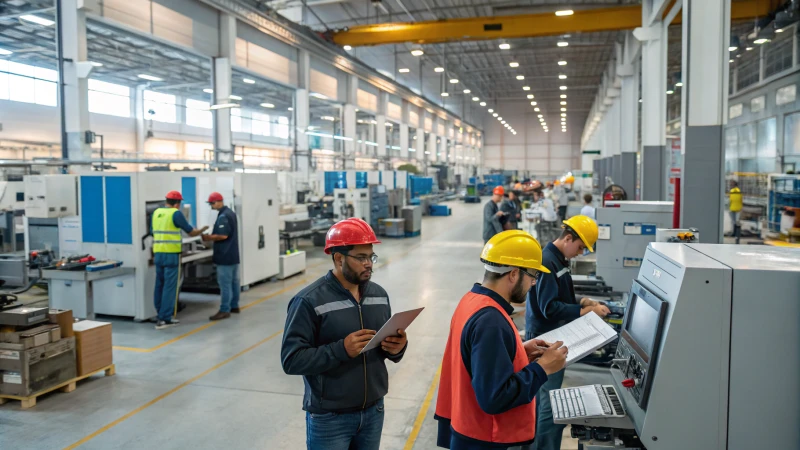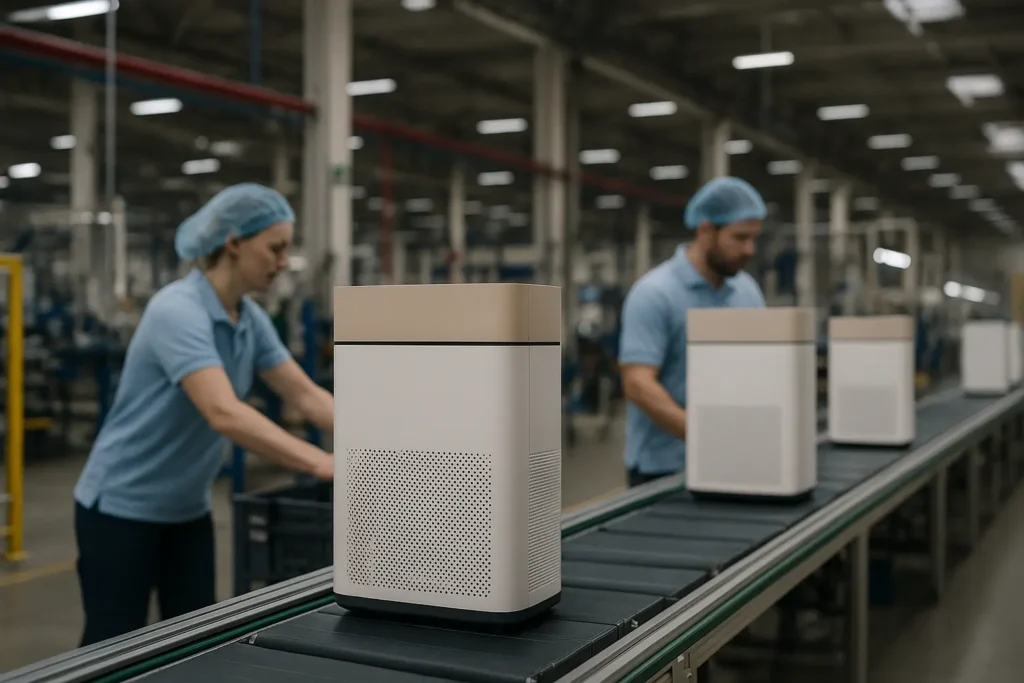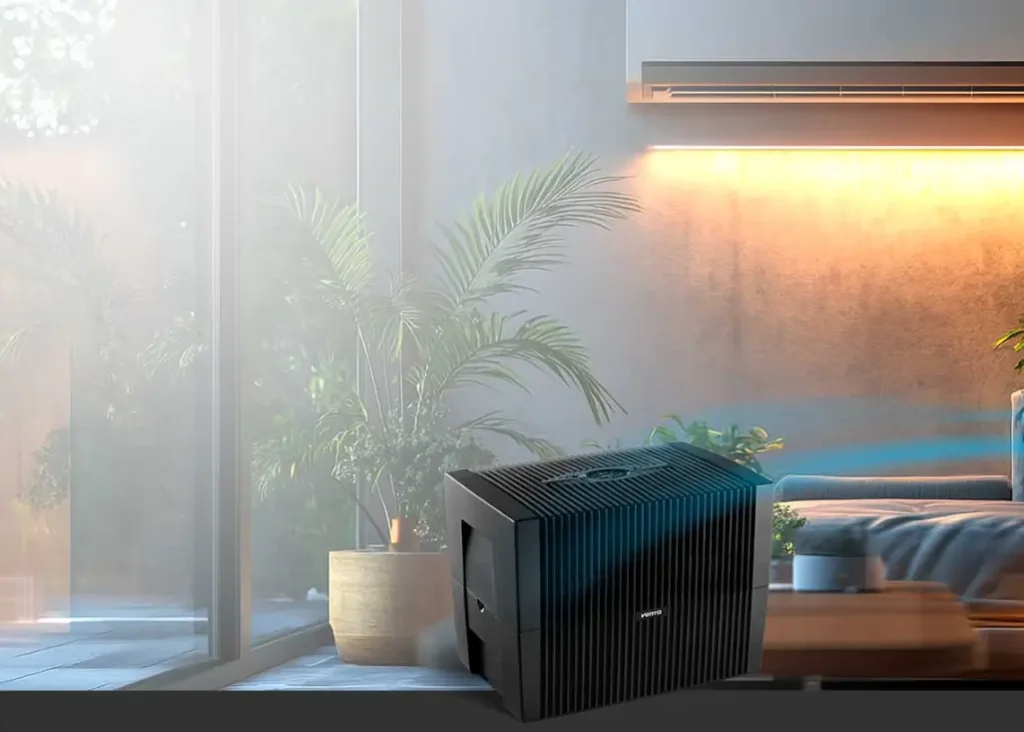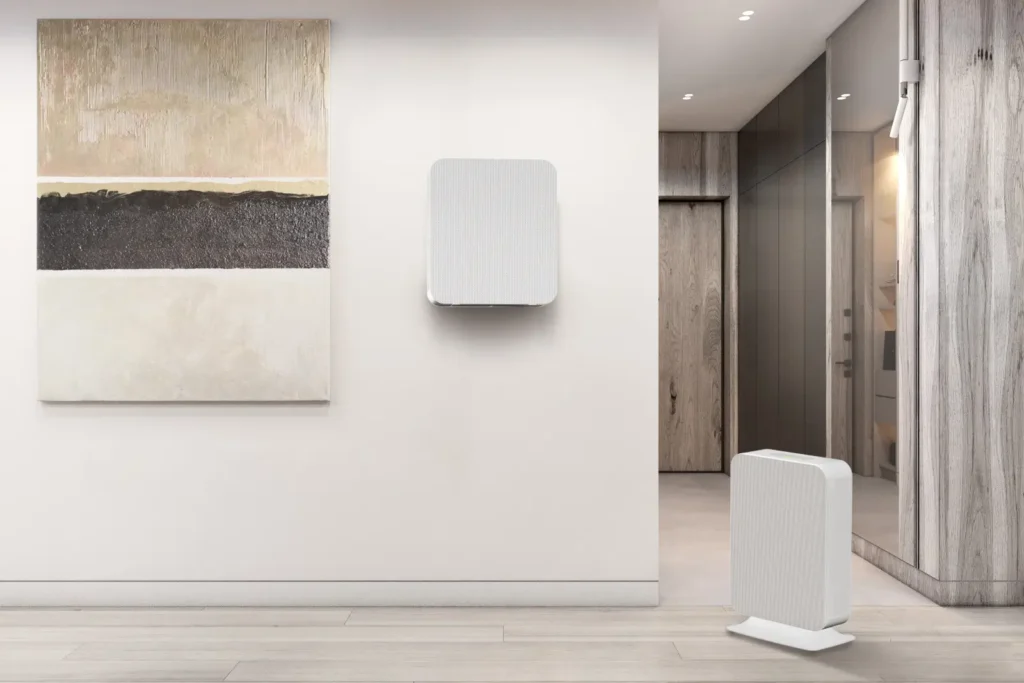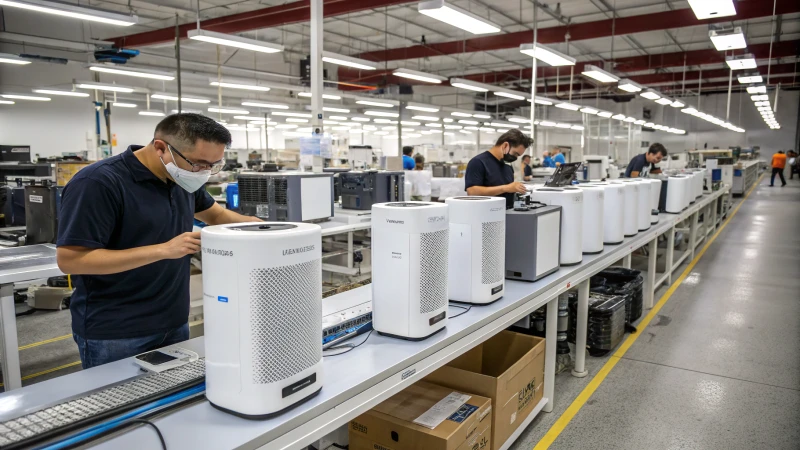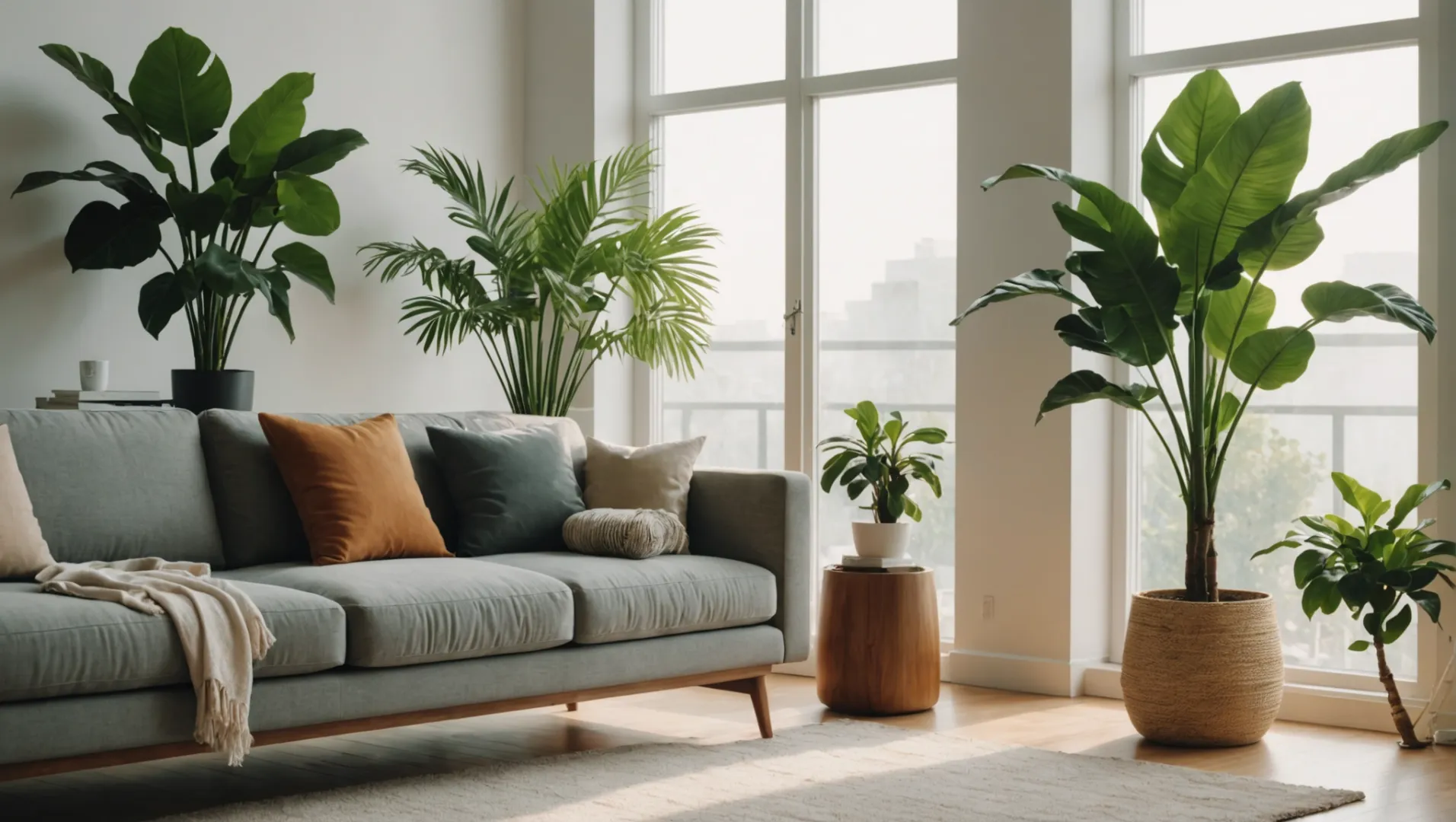
¿Está pensando en adquirir un purificador de aire para combatir el polvo de su hogar? Acompáñeme mientras desvelamos el misterio de estos aparatos y descubrimos si realmente cumplen su promesa de un aire más limpio.
Purificadores de aire, especialmente True HEPA son muy eficaces para reducir el polvo, ya que capturan el 99,97% de partículas de hasta 0,3 micras. Esto los convierte en una excelente opción para mejorar la calidad del aire interior.
Aunque la eficacia de los purificadores de aire es prometedora, es fundamental comprender los matices de los distintos modelos y tecnologías. En esta entrada del blog, exploraremos cómo funcionan estos dispositivos, sus beneficios y lo que debe tener en cuenta antes de hacer una compra.
Los verdaderos filtros HEPA capturan el 99,97% de las partículas de 0,3 micras.Verdadero
Los verdaderos filtros HEPA están diseñados para atrapar partículas de hasta 0,3 micras con gran eficacia.
Lo que hace verdadero HEPA ¿Filtros tan eficaces?
Verdadero HEPA son famosos por su capacidad para capturar un extraordinario 99,97% de partículas en suspensión de tan sólo 0,3 micras, pero ¿qué contribuye exactamente a esta eficacia?
Verdadero HEPA son eficaces gracias a su densa estructura de fibra y a su capacidad para atrapar partículas diminutas como el polvo, el polen y el humo. Probados por laboratorios externos, garantizan una eficacia de filtración del 99,97% para partículas de 0,3 micras o más, lo que protege la salud al mejorar significativamente la calidad del aire.
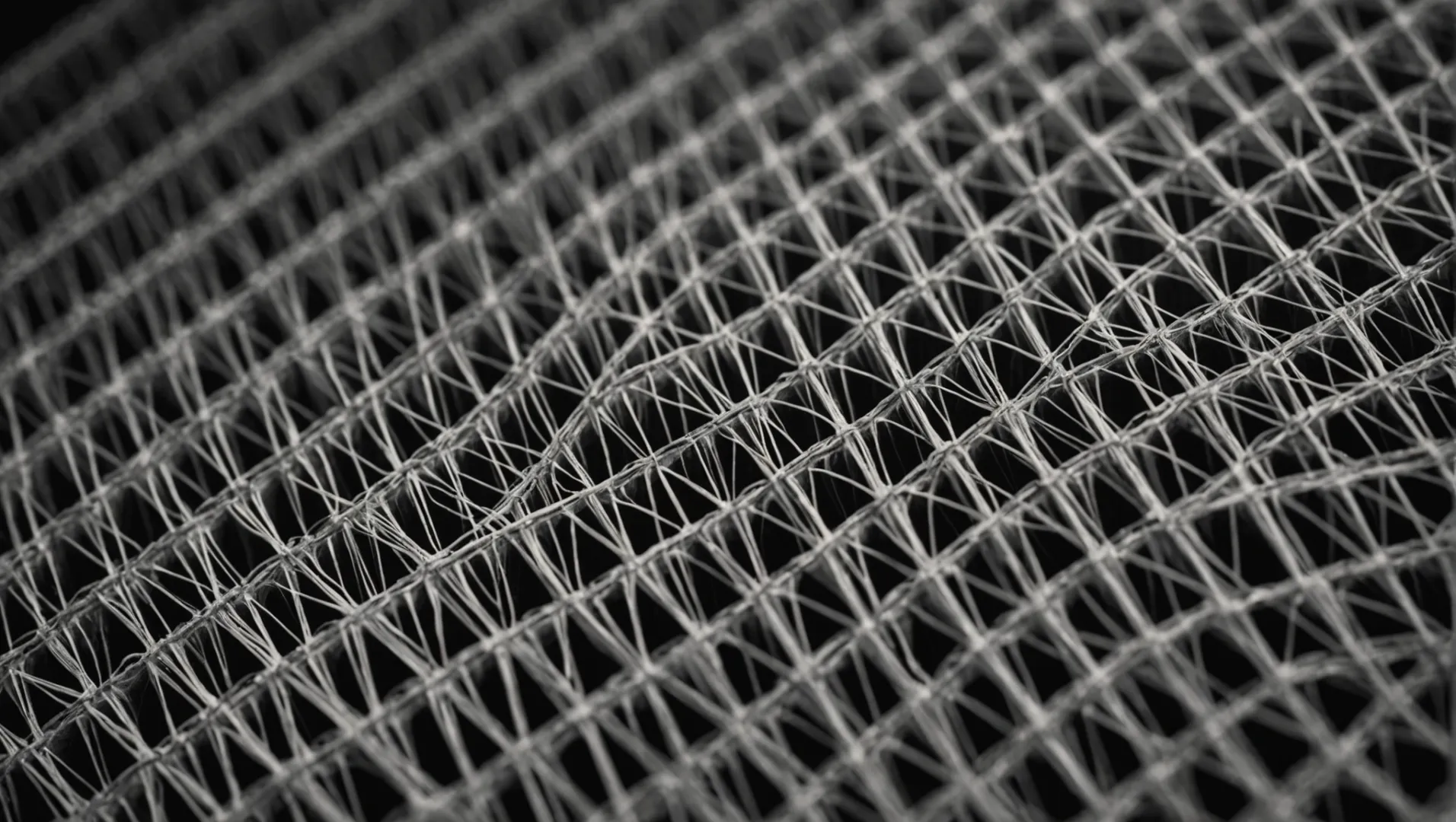
Comprender el mecanismo que subyace a la verdad HEPA Filtros
La clave de la eficacia de Verdadero HEPA filtros1 radica en su intrincado diseño. Estos filtros se construyen utilizando capas de fibras densamente empaquetadas que crean una estera diseñada para atrapar partículas mediante difusión, interceptación e impactación.
- Difusión: Las partículas diminutas chocan con las moléculas de gas y quedan atrapadas dentro de las fibras debido a sus movimientos erráticos.
- Intercepción: El flujo de aire transporta las partículas lo suficientemente cerca de una fibra como para permitir que se adhieran a ella.
- Impactación: Las partículas más grandes que viajan en una trayectoria recta chocan directamente con las fibras y quedan atrapadas.
Este enfoque multifacético permite a True HEPA para capturar partículas minúsculas como polvo, polen, esporas de moho e incluso humo.
Aplicaciones y ventajas en el mundo real
En entornos propensos a incendios forestales2como partes de los EE.UU., Verdadero HEPA Los filtros desempeñan un papel crucial. Pueden eliminar eficazmente las partículas de humo del aire, que suelen tener un tamaño inferior a 1 micra. Cerrando las ventanas y utilizando un True HEPA purificador de aire en modo turbo durante al menos una hora, puede lograr un intercambio de aire significativo, mejorando la calidad del aire interior.
| Características | Verdadero HEPA Eficacia del filtro |
|---|---|
| Eliminación del tamaño de las partículas | Captura a partir de 0,3 micras |
| Eficacia de filtración | 99.97% |
| Usos comunes | Alergias, humo, reducción del polvo |
| Beneficios para la salud | Reduce el riesgo de problemas respiratorios |
Comparación con otras tecnologías
Aunque existen tecnologías como la luz ultravioleta y los ionizadores, no igualan la eficacia de True HEPA filtros en la captura de partículas. La luz UV se centra más en matar bacterias y virus, mientras que los ionizadores funcionan cargando eléctricamente las partículas. Sin embargo, es posible que estas tecnologías no atrapen eficazmente todos los contaminantes del aire.
Para las personas alérgicas al polvo o que viven en zonas con mala calidad del aire, un True HEPA purificador de aire se recomienda a menudo sobre otras opciones para su superior eliminación del polvo3 capacidades.
Los verdaderos filtros HEPA capturan el 99,97% de las partículas de 0,3 micras.Verdadero
Los verdaderos filtros HEPA se prueban para garantizar que capturan el 99,97% de las partículas.
La luz UV es más eficaz que los filtros HEPA para eliminar el polvo.Falso
Los filtros HEPA son más eficaces para capturar las partículas de polvo que la luz UV.
¿Pueden ayudar los purificadores de aire con las alergias y los problemas respiratorios?
¿Tiene alergias o problemas respiratorios en casa? Descubra si los purificadores de aire pueden ser su solución para respirar mejor.
Purificadores de aire, especialmente aquellos con True HEPA alivian significativamente las alergias y los problemas respiratorios al atrapar alérgenos y contaminantes de hasta 0,3 micras.
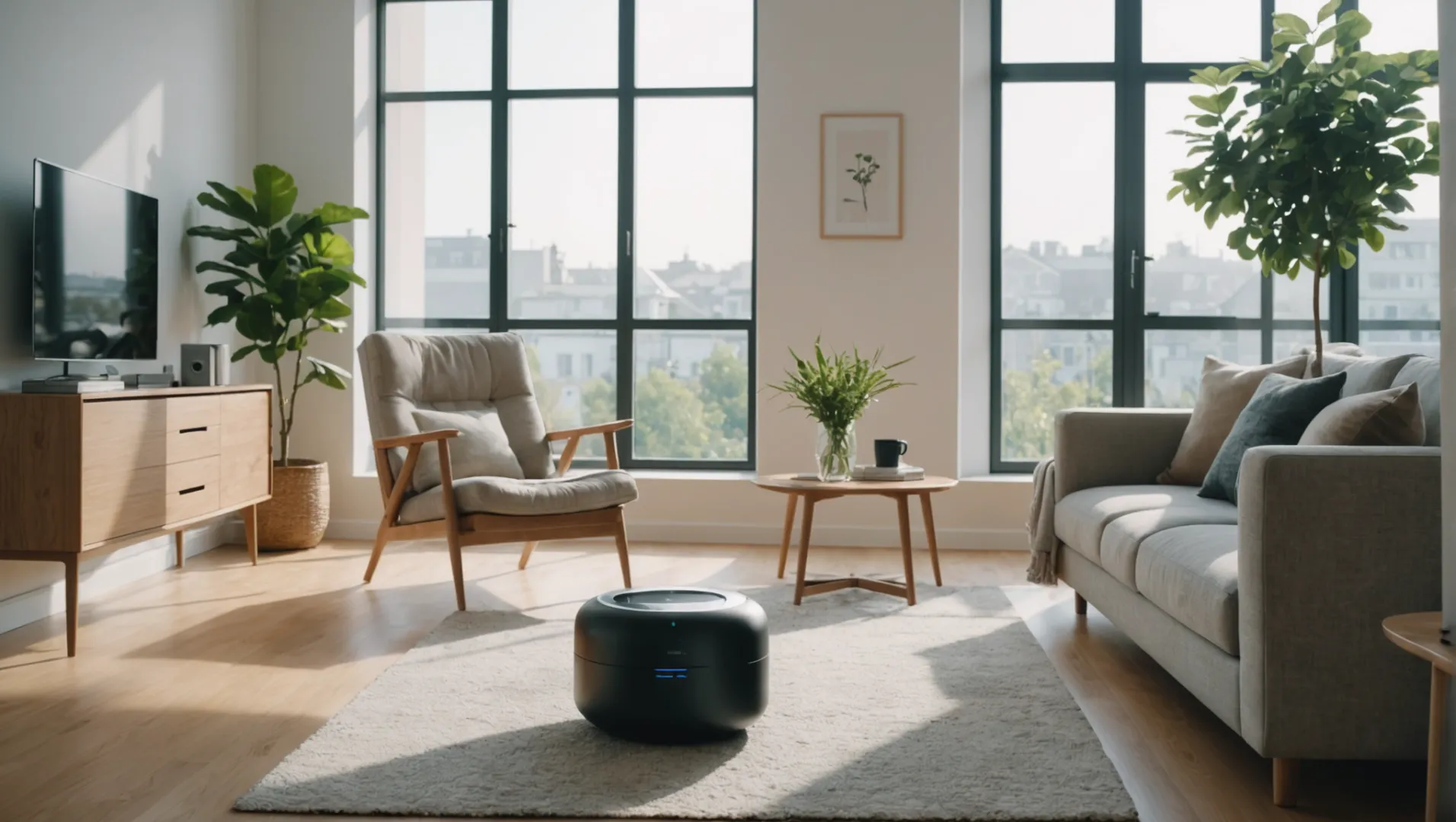
Comprender los alérgenos transportados por el aire y su impacto
Alérgenos como los ácaros del polvo, el polen, la caspa de las mascotas y las esporas del moho son contaminantes habituales del aire interior que desencadenan alergias y problemas respiratorios. Estas partículas pueden provocar síntomas como estornudos, congestión, tos e incluso ataques de asma. Los purificadores de aire con Verdadero HEPA filtros4 están diseñados para capturar estos pequeños irritantes, reduciendo su presencia en su espacio vital.
Qué tan cierto es HEPA Filtros de trabajo
Verdadero HEPA son muy eficaces en la captura de partículas suspendidas en el aire. Pueden atrapar hasta el 99,97% de partículas de tan sólo 0,3 micras, lo que los hace especialmente eficaces para las personas alérgicas. Si se utilizan correctamente, pueden reducir significativamente la concentración de alérgenos en el aire, minimizando así los síntomas de la alergia.
Beneficios de los purificadores de aire para la salud respiratoria
Para las personas que padecen afecciones respiratorias como asma o enfermedad pulmonar obstructiva crónica (EPOC), mantener el aire limpio es crucial. Al eliminar los contaminantes nocivos, los purificadores de aire pueden prevenir las exacerbaciones de estas afecciones. Durante acontecimientos como temporadas de incendios forestales5cuando el humo y otros contaminantes aumentan drásticamente, un purificador de aire puede convertirse en una herramienta vital para proteger la salud respiratoria.
Tecnologías adicionales en purificadores de aire
Si bien es cierto HEPA es el estándar de oro, algunos purificadores de aire incorporan tecnologías adicionales como filtros de carbón activado, luz UV o ionizadores para mejorar aún más la calidad del aire. Estas funciones pueden ayudar a neutralizar olores o eliminar bacterias y virus, ofreciendo una solución más completa para quienes padecen alergias graves o problemas respiratorios.
Consejos para un uso óptimo
Para maximizar los beneficios de un purificador de aire, tenga en cuenta los siguientes consejos:
- Colocación: Coloque el purificador en las zonas donde pase más tiempo, como dormitorios o salones.
- Mantenimiento periódico: Limpie o sustituya los filtros según las instrucciones del fabricante para garantizar su eficacia.
- Tamaño de la habitación: Elija un modelo que se adapte al tamaño de su habitación para obtener un rendimiento óptimo.
Si conoce cómo funcionan los distintos tipos de purificadores de aire y sus ventajas específicas, podrá tomar una decisión informada que se adapte mejor a sus necesidades y mejore la calidad del aire interior.
Los verdaderos filtros HEPA capturan el 99,97% de las partículas.Verdadero
Los verdaderos filtros HEPA están diseñados para atrapar partículas de hasta 0,3 micras.
Los purificadores de aire eliminan todos los alérgenos del interior.Falso
Aunque eficaces, los purificadores de aire no pueden eliminar 100% de todos los alérgenos.
¿Cómo funcionan los purificadores de aire en época de incendios?
Los incendios forestales liberan una peligrosa mezcla de humo y partículas finas. Pueden los purificadores de aire ofrecer alivio en esos momentos?
Purificadores de aire con True HEPA son eficaces durante las temporadas de incendios forestales, ya que capturan las partículas de humo y mejoran notablemente la calidad del aire interior. Al hacerlos funcionar continuamente en las zonas afectadas, ayudan a reducir la exposición a contaminantes nocivos.
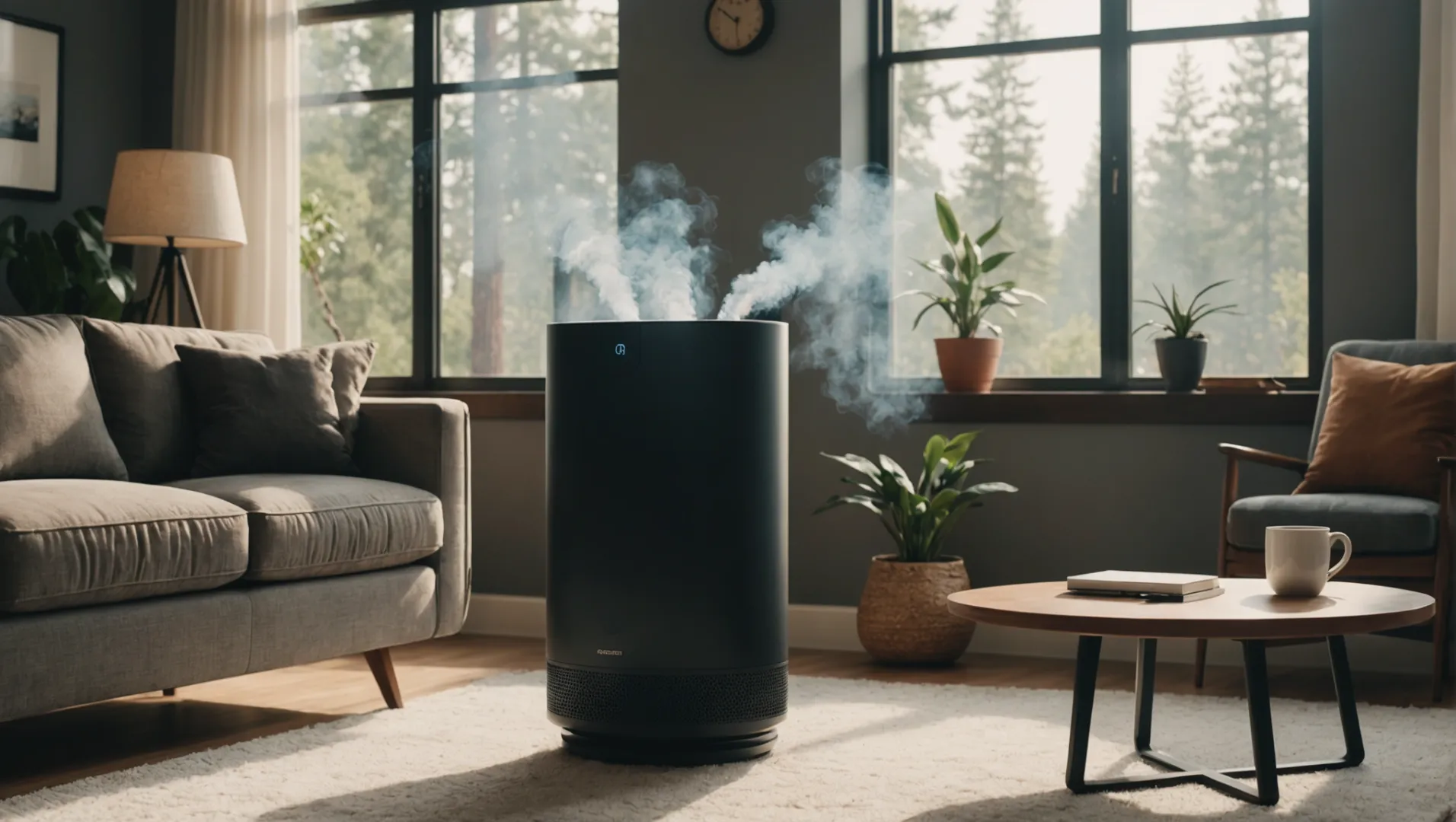
Comprender el impacto del humo de los incendios forestales
Los incendios forestales producen un cóctel de sustancias nocivas, como partículas finas (PM2,5), monóxido de carbono y compuestos orgánicos volátiles (COV). Estos contaminantes pueden penetrar profundamente en los pulmones y agravar las afecciones respiratorias. Durante tales eventos, la calidad del aire exterior se deteriora, afectando incluso a los ambientes interiores.
Papel de True HEPA Filtros
Verdadero HEPA certificados para capturar el 99,97% de partículas de hasta 0,3 micras, son ideales para hacer frente al humo de los incendios forestales. Atrapan eficazmente las diminutas partículas que componen el humo, mejorando significativamente la calidad del aire interior. Además del humo, estos filtros también eliminan el polvo y los alérgenos.
Optimizar el uso del purificador de aire durante los incendios forestales
- Colocación: Coloque el purificador de aire en las habitaciones donde pase la mayor parte del tiempo.
- Modo: Utilice el modo turbo o de alto rendimiento para una limpieza rápida del aire.
- Duración: Haga funcionar el purificador continuamente, sobre todo cuando los índices de calidad del aire muestren niveles elevados de contaminación.
- Sellado: Mantenga las ventanas y puertas cerradas para evitar que el humo del exterior se infiltre en su casa.
| Modo | Tasa de intercambio de aire | Uso recomendado |
|---|---|---|
| Turbo | 5-6 veces/hora | Durante los periodos de mayor contaminación |
| Normal | 3-4 veces/hora | Uso regular para mantener la calidad del aire |
Limitaciones y consideraciones adicionales
Si bien es cierto HEPA son muy eficaces, es importante tener en cuenta que no eliminan gases como el monóxido de carbono. Para una protección completa, considere los modelos que incluyen filtros de carbón activado para absorber olores y gases contaminantes. Además, el mantenimiento regular de los filtros es crucial para garantizar un rendimiento óptimo.
Eficacia de True HEPA en Filtración de humos6: Profundice en por qué estos filtros son los preferidos durante las temporadas de incendios forestales.
Tecnologías alternativas para la purificación del aire7: Explore otras tecnologías como la luz UV y los ionizadores y su eficacia contra el humo y el polvo.
Mantenerse informado sobre índices locales de calidad del aire8 puede ayudarle a decidir cuándo activar su purificador de aire y ajustar la configuración para obtener el máximo beneficio.
Los verdaderos filtros HEPA eliminan el 99,97% de las partículas de humo.Verdadero
Los verdaderos filtros HEPA capturan partículas de hasta 0,3 micras, incluido el humo.
Los purificadores de aire pueden eliminar el monóxido de carbono del humo de los incendios forestales.Falso
Los filtros HEPA no eliminan los gases; se necesitan filtros de carbón activado.
¿Existen alternativas a HEPA ¿Purificadores de aire para controlar el polvo?
HEPA Los purificadores de aire tienen fama de controlar el polvo, pero ¿existen otras opciones viables?
Alternativas a HEPA Los purificadores de aire incluyen filtros electrostáticos, filtros de carbón activado e ionizadores. Aunque pueden ayudar a reducir el polvo, su eficacia varía en comparación con los purificadores de aire True HEPA modelos.

Exploración de los purificadores de aire electrostáticos
Los filtros de aire electrostáticos utilizan placas cargadas eléctricamente para capturar las partículas de polvo. Estos dispositivos pueden ser eficaces para las partículas más grandes, pero puede que no capturen las partículas más pequeñas con la misma eficacia que True HEPA filtros. El mantenimiento de estos sistemas implica la limpieza frecuente de las placas para garantizar un rendimiento óptimo.
Filtros de carbón activado
Los filtros de carbón activo son conocidos principalmente por eliminar olores y gases, más que partículas sólidas de polvo. Sin embargo, a menudo se utilizan junto con otros sistemas de filtración para mejorar la calidad general del aire. Pueden ser una opción complementaria junto con otros métodos, pero puede que no basten por sí solos para eliminar una cantidad significativa de polvo.
Ionizadores: Pros y Contras
Los ionizadores liberan iones cargados en el aire, que se adhieren a las partículas de polvo, haciéndolas lo suficientemente pesadas como para caer al suelo. Aunque este método puede reducir el polvo suspendido en el aire, no elimina por completo las partículas del ambiente. Algunos ionizadores también pueden producir ozono, lo que puede afectar a la calidad del aire interior.
Comparación de alternativas
| Método | Eficacia sobre el polvo | Ventajas adicionales |
|---|---|---|
| HEPA Purificadores de aire | Alta | Eficaz contra partículas pequeñas |
| Depuradores de aire electrostáticos | Moderado | Puede ser rentable con una limpieza regular |
| Filtros de carbón activado | Bajo | Excelente para eliminar olores |
| Ionizadores | Variable | Puede ayudar a reducir el polvo pero puede producir ozono |
Al considerar alternativas a Verdadero HEPA purificadores de aire9Para mejorar la calidad del aire interior, es esencial evaluar sus necesidades específicas, como el tamaño del espacio y cualquier problema adicional, como olores o vapores químicos. La combinación de varios métodos puede ofrecer una solución completa para mejorar la calidad del aire interior.
Los filtros de aire electrostáticos capturan partículas más pequeñas que los HEPA.Falso
Los limpiadores electrostáticos son menos eficaces con las partículas más pequeñas que los HEPA.
Los ionizadores pueden producir ozono, lo que afecta a la calidad del aire interior.Verdadero
Algunos ionizadores liberan ozono, lo que puede afectar a la calidad del aire.
Conclusión
En mi viaje hacia un aire más limpio, he descubierto que True HEPA son una potente solución para reducir el polvo y mejorar la calidad del aire interior. Elija sabiamente en función de su entorno y sus necesidades específicas.
-
Explore información detallada sobre el funcionamiento de los filtros True HEPA.: Un filtro de partículas de aire de alta eficacia (HEPA) puede eliminar 99,97% - 99,99% de partículas en suspensión en el aire de tamaño igual, inferior o superior a 0,3 micras. ↩
-
Sepa cómo los filtros HEPA eliminan eficazmente las partículas de humo.: Y es cierto: los filtros de aire HEPA son excepcionalmente buenos a la hora de eliminar partículas de ese tamaño del aire. ↩
-
Encuentre los purificadores de aire mejor valorados diseñados específicamente para el control del polvo.: Hemos probado más de 60 purificadores de aire en los últimos nueve años, y el excepcional Coway Airmega AP-1512HH Mighty es nuestra mejor elección entre ellos. ↩
-
Conozca la eficacia y el funcionamiento de los filtros True HEPA.: Un filtro de aire de partículas de alta eficacia (HEPA) puede eliminar 99,97% - 99,99% de partículas suspendidas en el aire de tamaño igual, inferior o superior a 0,3 micras. ↩
-
Comprenda cómo funcionan los purificadores de aire en medio de un aumento del humo y los contaminantes.: Los purificadores de aire pueden ayudar a eliminar las partículas finas del aire de su hogar durante un incendio forestal. ↩
-
Comprenda por qué los filtros True HEPA destacan en la captura de partículas de humo.: Y los filtros de aire True-HEPA son excepcionalmente buenos a la hora de eliminar partículas de ese tamaño del aire. Nuestras mejores selecciones, el Coway AP-1512HH y casi ... ↩
-
Conozca otras tecnologías de purificación del aire y su eficacia.: Algunos ejemplos de purificación proactiva son los generadores de iones, la oxidación fotocatalítica y la tecnología patentada de ActivePure. ↩
-
Acceda a datos en tiempo real para controlar las condiciones locales de calidad del aire..: El Mapa de Incendios y Humo de AirNow incluye datos crowdsourced de miles de sensores de calidad del aire, además de datos de miles de monitores permanentes de PM2,5... ↩
-
Conozca la eficacia y las capacidades de los filtros True HEPA.: Los True HEPA duran más y pueden funcionar 24 horas al día, 365 días al año. Puede eliminar eficazmente el polvo, la caspa de mascotas, el polen, el moho, las bacterias,... ↩


